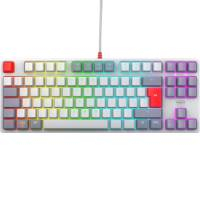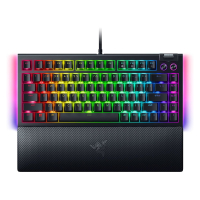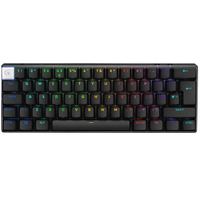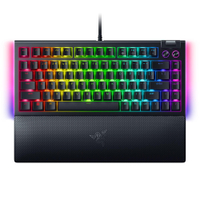Best mechanical keyboards in 2025: the clacky boards I'd buy in a heartbeat
Make the switch with our guide to the best mechanical gaming keyboards.
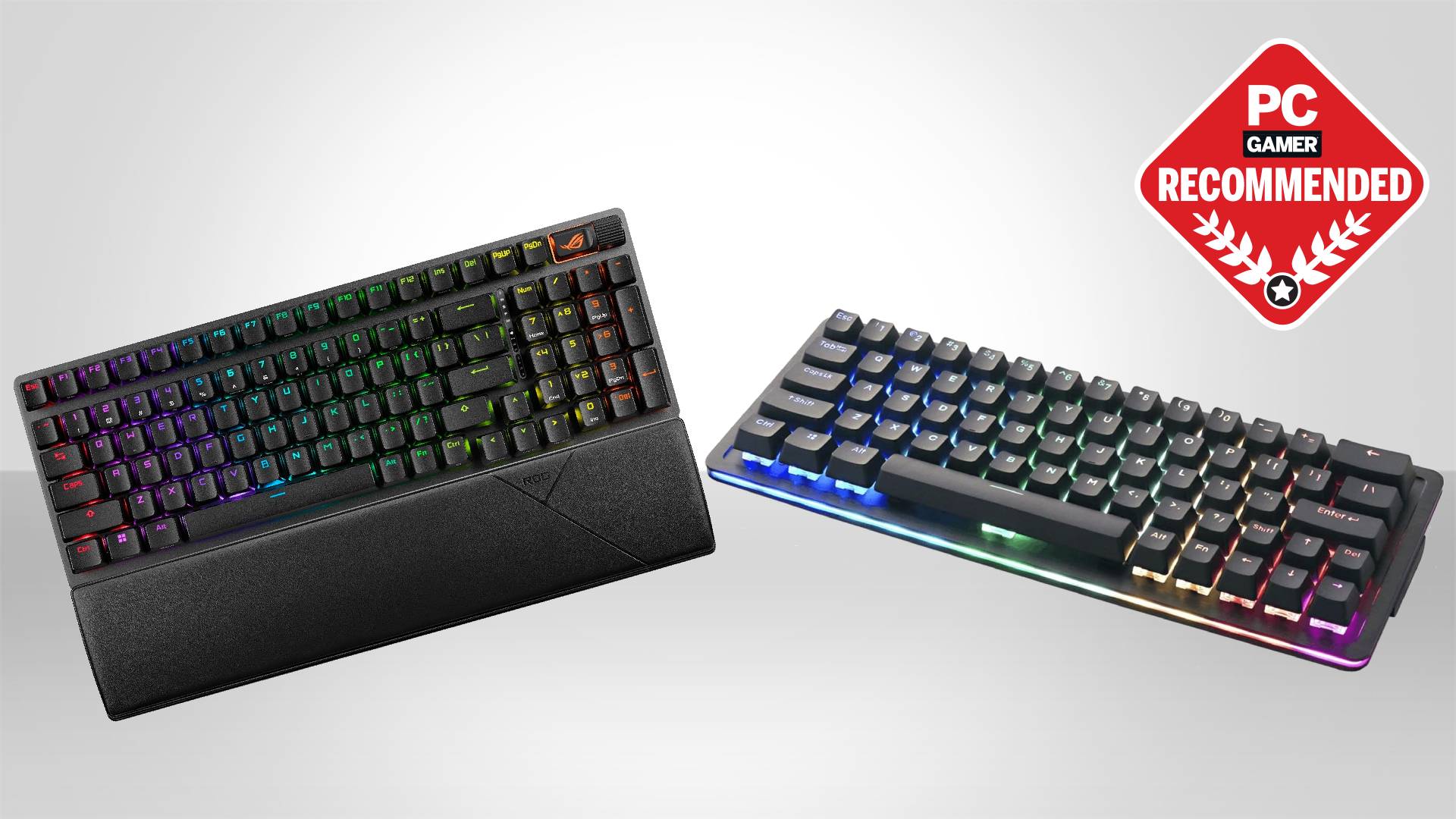
The best mechanical keyboards offer a sublime typing experience. You won't just find them sleek to use, you'll actually want to type on these keyboards. They feel good and happen to sound pretty great. And, of course, they're great for gaming, too.
The best mechanical keyboard is the Asus ROG Strix Scope II 96 Wireless. The combination of lubed key switches, PBT keycaps and a hot-swappable PCB makes for a sublime typing experience. The best budget mechanical keyboard is the Mountain Everest 60, as it's modular and feels wonderful to use, yet somehow costs very little.
The supreme feel of mechanical keyboards comes down to their key switches. There are tons of different types of mechanical switches. The key switch spectrum is vast and caters to a variety of tastes. From loud and tactile, to quiet and spongy, each has a different feel. Our guide to mechanical key switches can help you determine which might suit you best.

With a growing collection of keyboards and key switches at his fingertips, Jacob is the best man to help you find your perfect keeb. A mechanical aficionado at heart, Jacob has years of experience in tip-tapping away at the latest and greatest to guide you to typing glory.
Recent updates
April 14, 2025: Added two more fresh and funky keyboards to the 'also tested' section—the Cherry MX 8.2 TKL Wireless XAGA, and the Cherry XTRFY K4V2 TKL. We've also double checked the rest of our recommendations to ensure they still represent some of the best keyboards out there.
March 13, 2025: To check through our recommendations, they have stayed the same as we believe they are the best mechanical keyboards you can buy right now. Alongside this, we have added the Corsair K70 Pro TKL, 8BitDo Retro, Lemokey L5 HE, Ducky One X, and Gamakay TK101 to our 'also tested' section, as these have all been reviewed since the last update.
January 31, 2025: The Keychron K2 HE and NuPhy Air60 HE are now in our recommendations for best rapid trigger and low-profile mechanical keyboards, respectively. We've also added our latest reviews to the Also Tested section and checked over the rest of our picks to ensure that they're still the best choices for you.
The quick list

The best overall
The Strix Scope II 96 is excellent for typing. Not only is it a mechanical dream to use, but it's also our pick as the best gaming keyboard.

The best budget
Mountain has taken all it's learnt from its first keyboards and created the best-feeling, most usable 60% gaming keyboard we've ever used. It's solid, reliable, responsive, and offers the best typing experience around. And it's now incredibly cheap, too.

The best office
If you want a keyboard that looks like any other at the office, but secretly is a monster mechanical, then look no further than this Das Keyboard 6 Professional.

The best tenkeyless
I'm not kidding when I say typing on the Keychron Q3 Max ruins other mechanical keyboards for you. It's that good. It's simply excellent for typing, and a spot of gaming, too.

The quietest keyboard
The Topre is a mechanical keyboard, sort of. It's not a membrane in the traditional sense, nor is it mechanical in the traditional sense. It's some sort of in-between and all the quieter for it, and a delight to type on, too.

The best ergo
If you're ready to take the leap into the world of weird ergo boards, you'll find no better option than the Moonlander.
⬇️ Click to load more of the best mechanical keyboards ⬇️

The best rapid trigger
Competitive gaming demands ultra-fast response times from keyboards, so that means Hall effect switches and rapid trigger support. The Keychron K2 HE is the perfect example of how to do all that properly.

The best budget wireless
It might be cheap, but the Keychron K2 delivers wireless mechanical action for less than the competition, with a good feel and great build quality.

The best low profile
Want to game for hours but not stress your wrists? The NuPhy Air60 HE is super sleek and boasts Hall effect switches, rapid trigger support, and user-friendly software.
The best mechanical keyboard





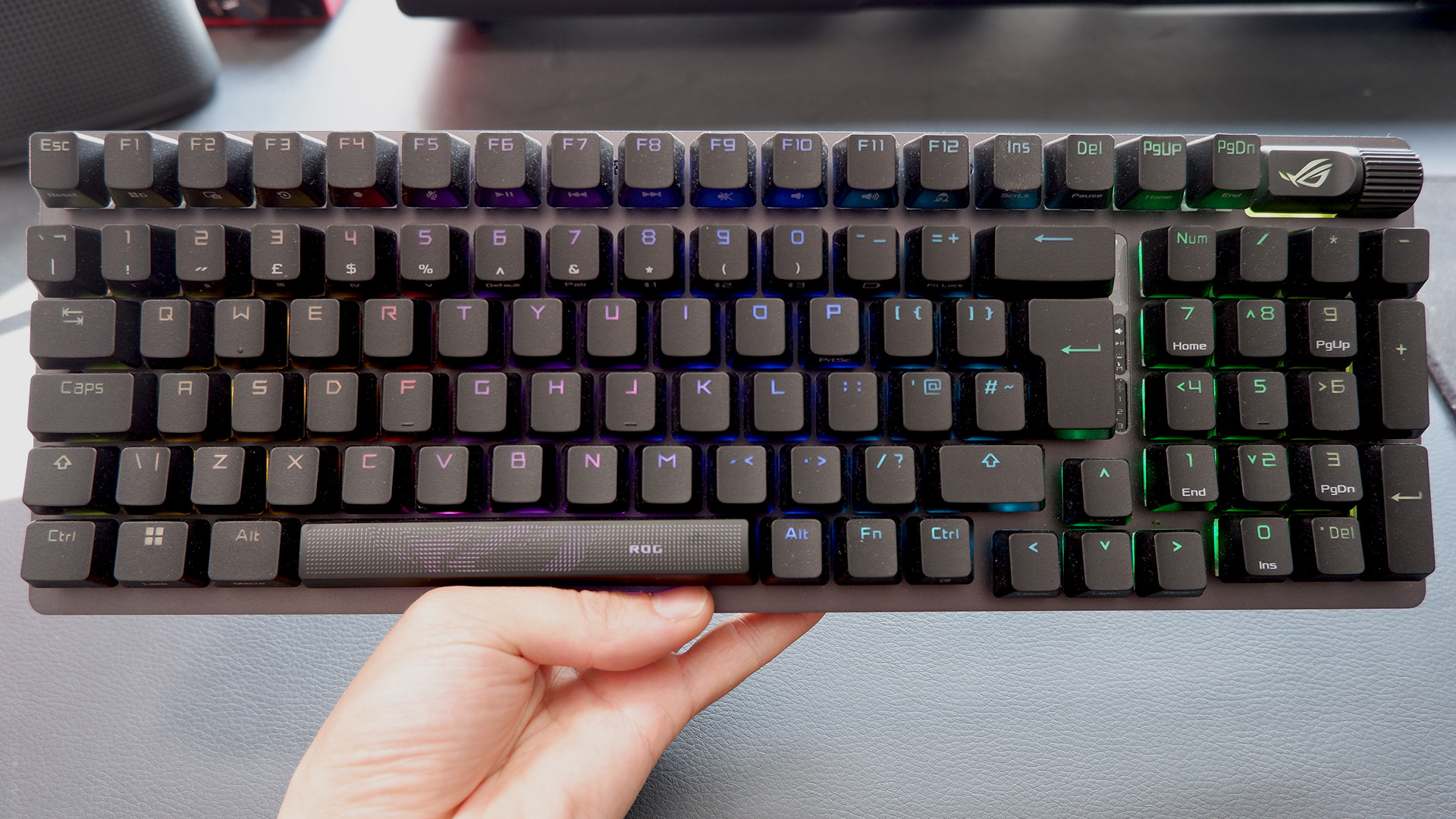
Specifications
Reasons to buy
Reasons to avoid
✅ You want the smoothest typing experience: With lubed switches out of the box, you'll find no equal to the ROG Strix among gaming keyboards.
✅ You want high quality: With PBT keycaps and gorgeous switches, the ROG Strix Scope II 96 Wireless oozes premium.
❌ You want speed or analog features: As fast as most other mechanical keyboards, nowadays you can find faster keyboards than this using Hall effect or optical switches.
The Asus ROG Strix Scope II 96 Wireless is the best mechanical keyboard overall. For gamers that type, or typists that game, there's no better mech keeb.
The switches in the ROG Strix Scope II 96 Wireless are mighty. They're an in-house design, and available in either linear or tactile form. The tactile NX Storm switches are probably the pick for a typist, though we tested the more gamer-focused linear NX Snow option.
Either switch will net you the ROG Strix Scope's best feature: lube. Not one of the usual things we'd find on a gaming keyboard, but a drop of lube on every mechanical key switch makes a surprising amount of difference to the typing experience. Each key press is smooth and consistent, and every thwack produces a glorious clack.
This keyboard really does sound fantastic, and that's a combination of the switches and the PBT keycaps. Just to note, this board is available with ABS plastic caps as well, which aren't as durable and usually aren't as lovely on the ears.
You are able to swap out any of the NX Snow switches on this keyboard for keys of your choosing. However, if you don't replace them with lubed switches, or lube some new ones yourself with a paintbrush, I will be extremely disappointed in you.
The Scope II 96 is nearly a full-size board—it importantly retains a full numpad—though it's been squished down into a more compact chassis. As a result, the delete key is further away from your pinky than normal. It takes some getting used to, but I've been tapping away on it for a while now and I feel I've got typing on the Scope II 96 down to a fine art.
A superb typing experience and a cleverly compact form factor make the Scope II 96 a fantastic option
Read our full Asus ROG Strix Scope II 96 Wireless review.
The best budget mechanical keyboard







Specifications
Reasons to buy
Reasons to avoid
✅ You need a numpad and a space-saver: You can save heaps of room by trimming down your gaming keyboard, but you can still opt for the additional numpad.
❌ You're stuck in your ways: Compact keyboards are great for gaming, but to become a speedy typist requires relearning some tricks.
The Mountain Everest 60 is the best budget mechanical keyboard. The fact that it's been out for a while actually works in its favour because, over time, its price tag has dropped even lower.
Our previous "best budget" pick was the G. Skill KM250 RGB, which is a great board and is slightly cheaper than the Everest 60, but given the Everest's new low price, the G. Skill doesn't make much sense anymore.
That's because the Everest isn't just a dinky collection of clacky keys; it's also one of the most practical compact keyboards on the market. It should, by all rights, have a price tag befitting its high-end feel and cornucopia of features, but it doesn't. It's cheap.
The Everest 60 isn't your everyday compact keyboard. It's modular. You can purchase a numpad for the side and snap it into place on either side of the keyboard. That solves one issue with compact keyboards: my precious Alt-codes are still alive and well.
More importantly, it allows you to do something few have the courage to do: move your numpad to the left-hand side of the keyboard.
I know, it's a brave new world with the numpad on the opposite site, but it's clearly the way God intended for it to be. For right-handed gamers, anyway, it means you have a numpad at your disposal and more room to whip your gaming mouse around. And if you happen to be numbering into spreadsheets or the like, having your right hand free to click different cells and UI elements is handy.
However, as with any compact keeb, there is a downside to fewer overall keys. It's just not always as convenient as a full-size board. The tiny right shift key takes some getting used to, as well, but the added cursor keys are a real boon.
The Everest 60 also oozes quality. It's easily the best typing experience I've had, which is saying something given this is coming from a compact design I'm usually not that fussed about.
A silicone layer within the keyboard base adds weight and dampens rattle from the keys sitting above. Great if you're a heavy typist. There are also two layers of foam, on either side of the PCB, to again improve the aural experience. Mountain has used genuine Cherry stabilisers, too, and has lubed them up properly for the Everest 60 to prevent rattle.
There are a few switches to choose from: Tactile 55 (denoting the 55cN force needed for actuation), Linear 45, and Linear 45 Speed (which have a shorter travel and actuation point). I've been using the Tactile 55 in my sample with no complaints.
Do note, however, that the numpad accessory is extra, so you won't get that included for its budget price. There are some bundles packaging the two together, and ones that include the colourful PBT keycap range, which can make it a bit cheaper. But not by much.
Even without the numpad, though, for its cost, the Mountain Everest is an absolute steal. It's fantastic to type and game on and is well worth a look.
Read our full Mountain Everest 60 review.
The best office mechanical keyboard

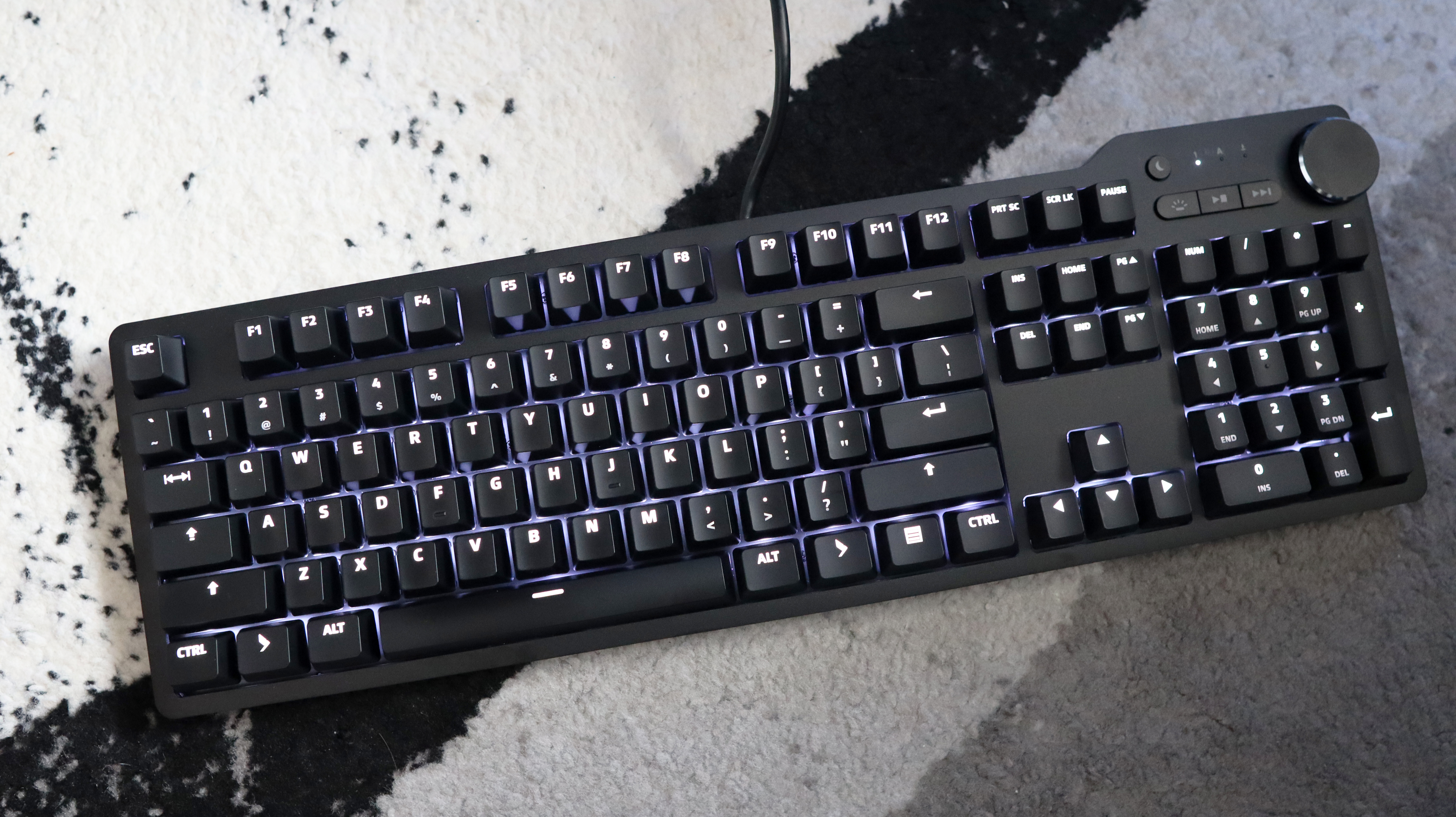




Specifications
Reasons to buy
Reasons to avoid
✅ You want thoughtful touches: Where the 6 Professional wins is with the fact it’s a great all-rounder and offers thoughtful features, including a dual USB-C port hub and a volume dial.
❌ You want software support: While the 6 Professional provides a fantastic overall experience, the lack of software for configuration means it is a little dated on that front.
Das Keyboard doesn't do frills. That's why the 6 Professional is our pick for the best office mechanical keyboard. Passing up flashing lights and rapid-fire switches, this practical keyboard is a dab hand for workplace duties.
You'll be the envy of all when you're bashing out a spreadsheet on this bad boy. The Cherry MX switches in the Das Keyboard are a very well-known quantity. We've been using them for years. They're dependable and consistent, and admittedly a little bit boring.
Though there are some standout features. The large volume wheel is a dream, and the pair of USB-C passthrough ports is something we've yet to see elsewhere. That means you can plug in your mouse and another device into your keyboard and cut down on the lengthy cable runs behind your PC.
Backlight controls are located on the upper right of the board. There's not much to fiddle with here, however. There's a simple white LED behind each switch, which shines through the ABS keycap atop, and you can dim these to your liking with the button on the board.
Our biggest complaint with the Das Keyboard is that it doesn't move the dial for mechanical keyboards. It's not that different from a Das manufactured many years ago, and some PBT keycaps or more exciting upgrades wouldn't go amiss.
That said, you don't buy a Das Keyboard because you want a gaming keyboard. It fulfils a purpose, and that's being a straightforward mechanical to replace your godawful OEM membrane. While I'd personally rather buy the Topre RealForce R2 for an office keyboard, it's absurdly expensive. The Das Keyboard is a much more sensible pick for sensible people.
Read our Das Keyboard 6 Professional review.
The best tenkeyless mechanical keyboard


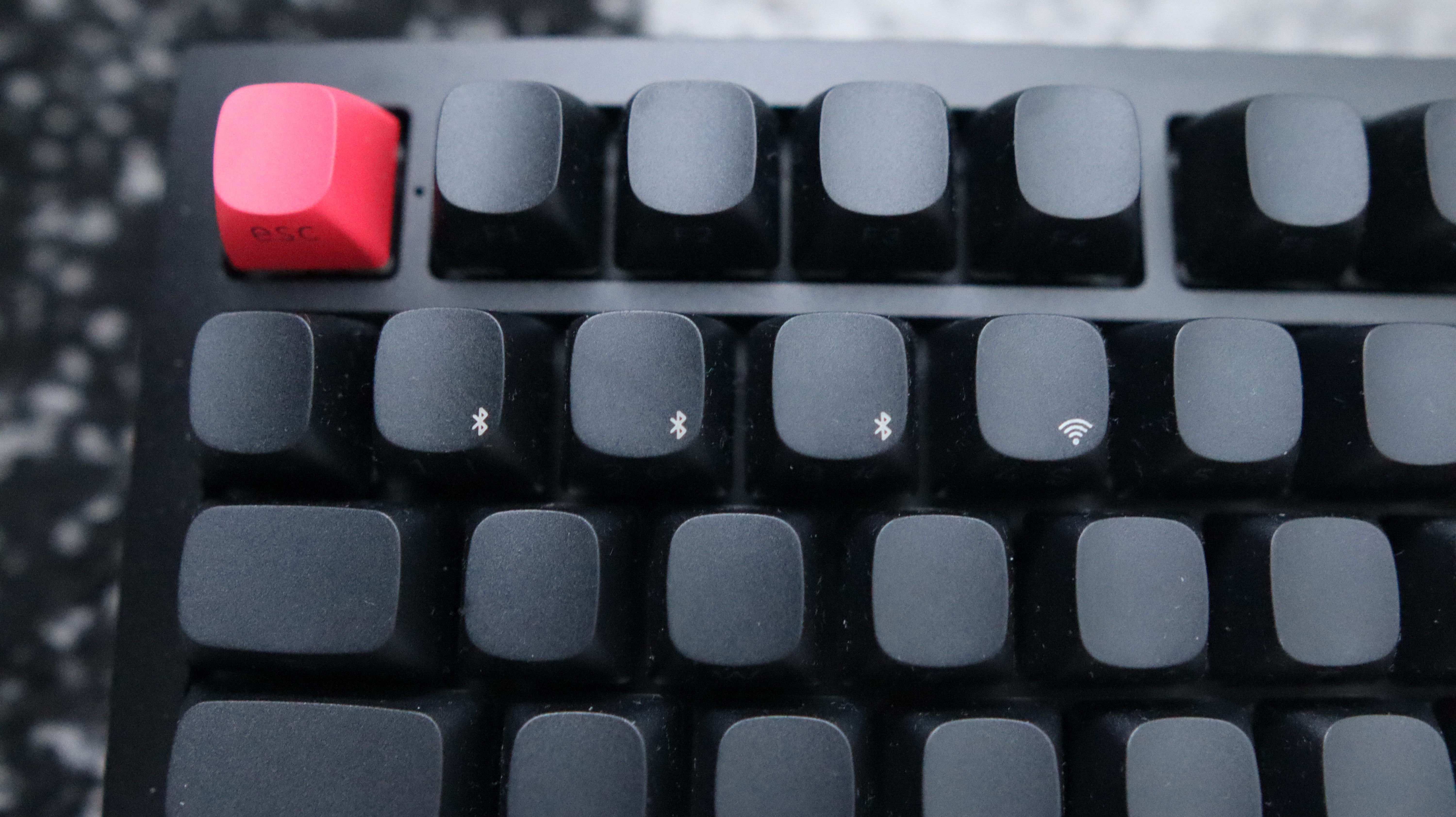




Specifications
Reasons to buy
Reasons to avoid
✅ You want the best typing experience: I've tested a lot of boards over the years, and this really is up there, if not the best, of the lot.
❌ You are looking for affordable excellence: The Q3 Max is fantastic and expensive in equal measure.
The Keychron Q3 Max is the best tenkeyless mechanical keyboard for a very good reason: it delivers an impeccable typing feel that's really only rivalled by the very best custom keebs.
You'll find Gateron Jupiter switches inside the Q3 Max. Either Red, Brown or Banana. That last one really came outta nowhere, huh? We had a set of Red linear switches in our review sample, which are great for gaming and superb for thwacking all day in the office.
The Jupiter switches come pre-lubed, which means they're similar to those found within the ROG Strix Scope II 96 above. Though, they're not the only feature of the Q3 Max that makes it so excellent for typists.
The construction of the Q3 Max is fantastic. It comes with various layers, each one dedicated to doing something good in the overall sandwich of acoustic foam and film. The end result is a stable, responsive and springy feel to each key that doesn't go amiss once you're typing at speed on it.
The legend-less keycaps might not appeal to everyone, though for avid touch typists, they're a bit of a brag. They do come with legends, anyway; they're just on the side. PBT keycaps and shine-through on offer here are a huge plus. You can buy regular keycaps instead if you prefer.
While not usually something we're necessarily seeking out in a mechanical keyboard for standard typing work in the office, the inclusion of both Bluetooth and 2.4 GHz wireless functionality on the Q3 Max helps keep it flexible for all manner of uses. That's actually a real positive if you intend to carry this keeb around with you between home and office, which you might want to, considering how lovely it is and the price.
Yep, for a keyboard so compact, the Keychron Q3 Max doesn't come cheap. I feel like it's your money's worth, but that's a matter of opinion. Also, some typists might feel at a loss without a numpad for day-to-day spreadsheet work or similar. I know I miss having access to alt codes.
Still, a few downsides don't take the shine off this all-around superb mechanical keyboard.
Read our Keychron Q3 Max review.
The quietest keyboard


5. Topre Realforce R2
Our expert review:
Specifications
Reasons to buy
Reasons to avoid
The Topre Realforce R2 is the quietest keyboard we recommend for typists. A unique key design makes for a much less in-your-face sound profile than most mechanical keyboards, and yet is just as much of a joy to type on.
Let's get this out of the way early. Technically, Topre's own brand of capacitive switch isn't a mechanical keyboard in the same sense as many others on this list. It's a sort of mechanical, membrane hybrid. Before you're scared off by the mention of membrane, however, just know this is more the Ferrari of membrane keyboards than the sort you'd find bundled with a boring office computer.
The RealForce R2 does look like a boring office keyboard. It lacks that flashy appeal of any sort of supercar. It comes in black, with dark grey PBT keycaps, and there are no RGB LEDs on the standard model. There is, however, an RGB model for that extra flair. Though even then, it has an understated appeal, which I really like but I know many find it just too plain for their desktops.
It doesn't even have media keys or handy shortcuts. It's not at all like many of the best gaming keyboards.
The main draw of the Realforce is how it feels to use. It's like nothing else to type on, and I can comfortably use it all day without getting sick of it. It has a relatively springy action with a reasonable actuation force required to depress each key. It's not rated particularly high for actuation force—generally either 45 g or 55 g, and there's even a 30 g model—and yet for a linear key that's on paper similar to a Cherry MX Red, it feels entirely different.
The best way I can explain it is like having the tactile response part-way down an MX Brown switch, but right at the very top of the key. Once you surmount that initial force, the rest of the key is a smooth travel until it gently bottoms out. Then it springs right back, pronto.
Simply put: it's lovely.
But you don't just want lovely, you're reading this because you want quiet. Most mechanical keyboards on this list are not that, they're quite the opposite, and yet the Topre is one of the quietest keyboards I've used that still retains a gorgeous typing experience. You could get a quieter membrane, but it'd be worse to type on all day, every day. Trust me.
The Topre has some rattle to each key, though nowhere near as much as something like the Corsair K70 Max or a number of Razer boards. Generally, though, it doesn't have that same high-end resonant clack as many mechanicals do, instead offering a low thud. That does make a difference if you're in an office and getting a few too many mean looks from your colleagues with your current mechanical
The best ergonomic mechanical keyboard







Specifications
Reasons to buy
Reasons to avoid
✅ You need ultra ergonomics: Everything about the Moonlander is about making the keyboard as comfortable as possible for your human fingers.
❌ You don't want to spend weeks learning how to type again: The columnar arrangement is great but tough to get to grips with if you're not already familiar.
The best ergonomic mechanical keyboard is the ZSA Moonlander. It does everything you could ask of it incredibly well, though always with one eye on ergonomics.
If you haven't tried an ergonomic split keyboard before, you might want to prepare yourself for a learning curve. Touch typists who haven't let their skills slip over the years will do better than most, but the ZSA still demands you come to terms with its special brand of layout. A columnar arrangement effectively means all the keys are arranged in a perfect vertical column, which, if you look at any regular keyboard, is really weird.
A columnar arrangement is good for your fingers, though. Your fingers much prefer to move up and down in a straight line than side to side.
Once you're up and running on an ergonomic keyboard like this, it's truly a dream to use. Tilt it into place with the adjustable legs, and it'll feel like a much more natural experience to type on than most flat slabs of keys we call keyboards.
The Moonlander isn't as well-suited to gaming as some other ergonomic boards we've seen. Namely, the Kinesis Freestyle Edge RGB. Though for pure typing, it's gorgeous once you get going.
You can tweak the layout within the ZSA website or its own Keymapp program. This is especially important for gaming, as ZSA has made some strange design choices to make the keyboard smaller. For instance, there's no dedicated Left Control key by default, meaning you might need to remap your crouch button in FPS games or change the keyboard's configuration.
Beyond the usual alphanumeric keys, most others are mapped to a secondary layer, accessible via a shortcut layer key that switches between them. This takes some getting used to, but it's well-organised and becomes snappy to use with time.
A boutique keyboard that isn't going to be a great fit for everyone, if you're looking for excellent ergonomics and don't mind a learning curve, you really won't find much better than the ZSA Moonlander.
Read our full ZSA Moonlander review.
The best rapid trigger mechanical keyboard

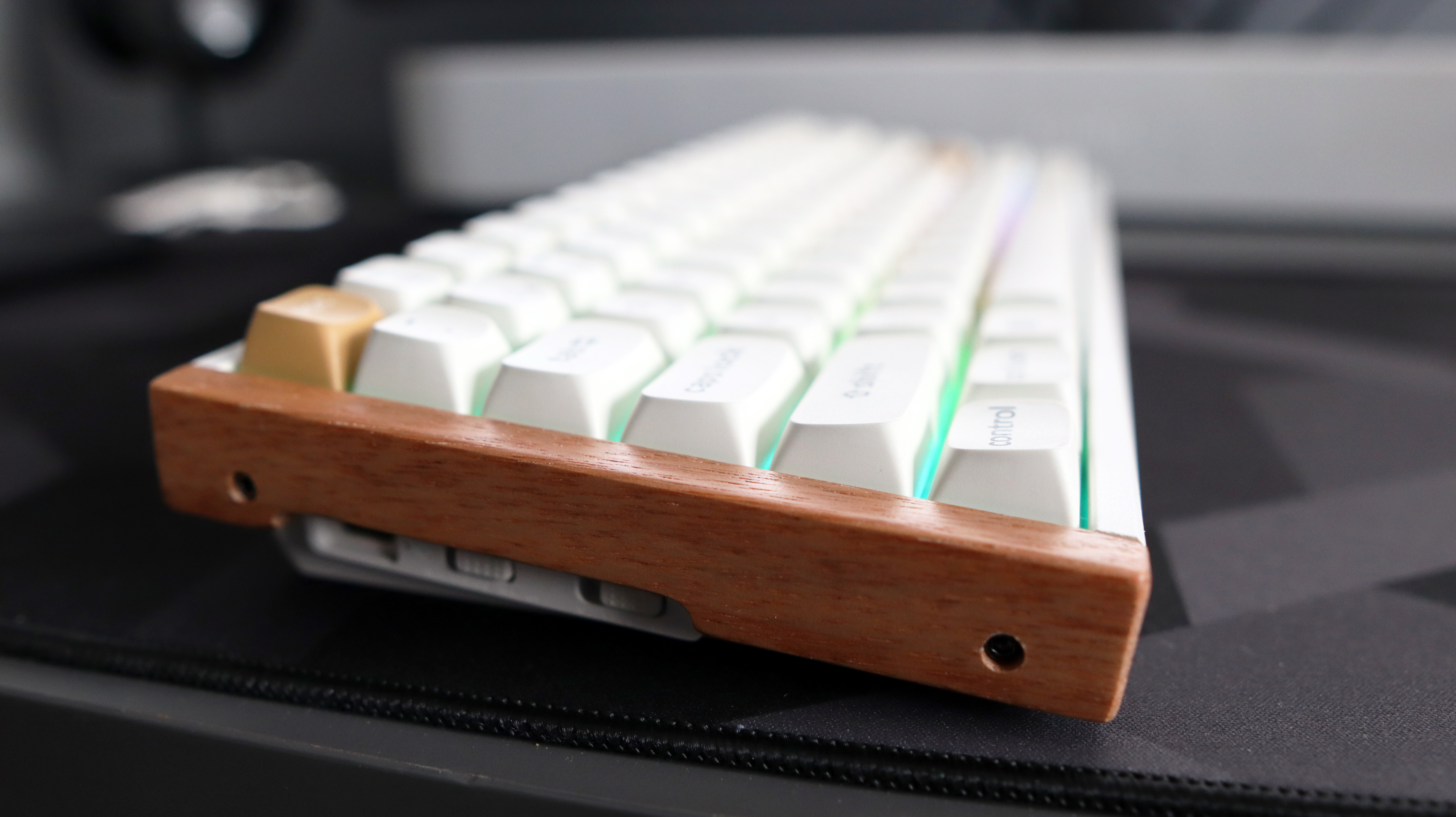
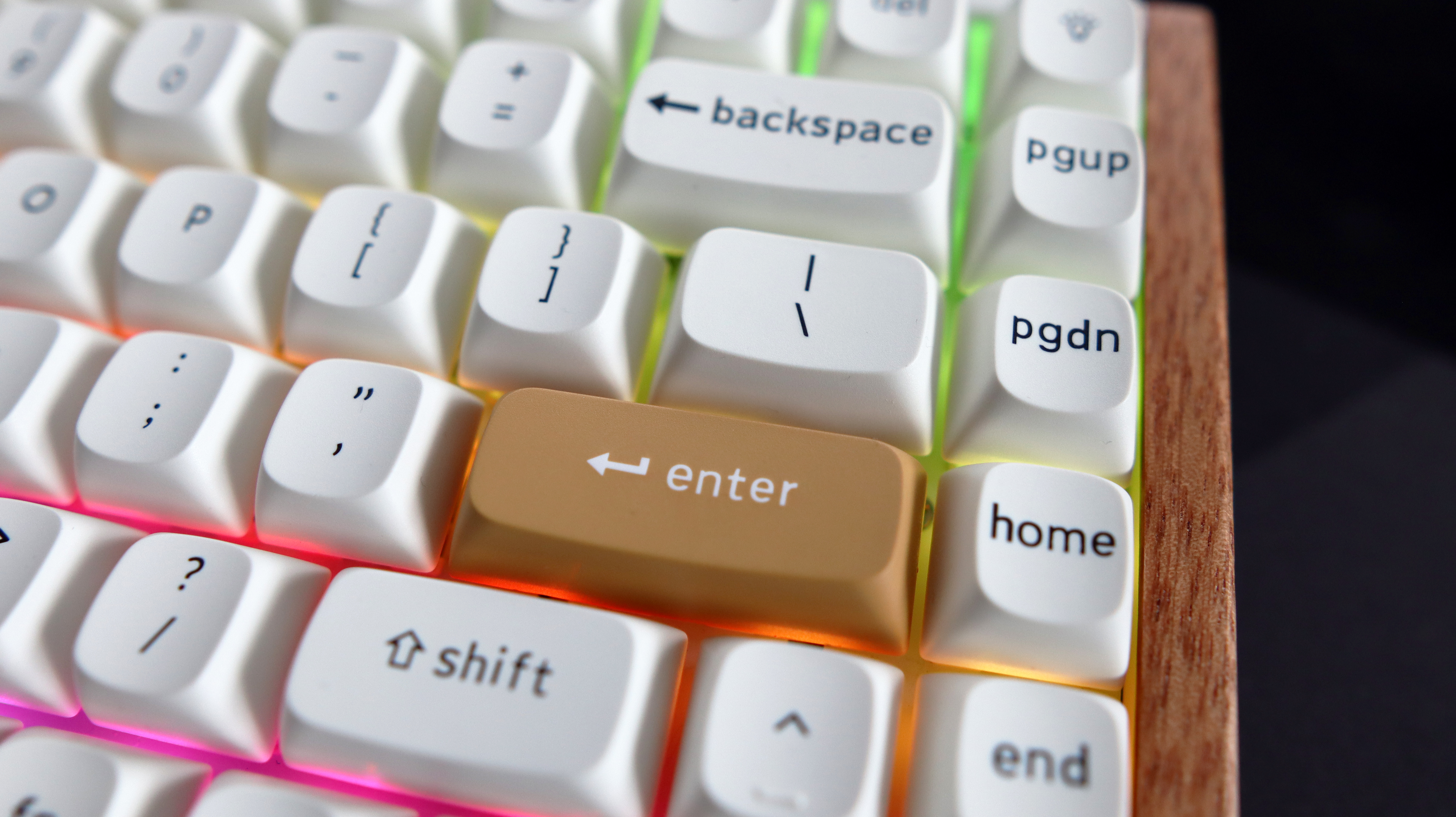
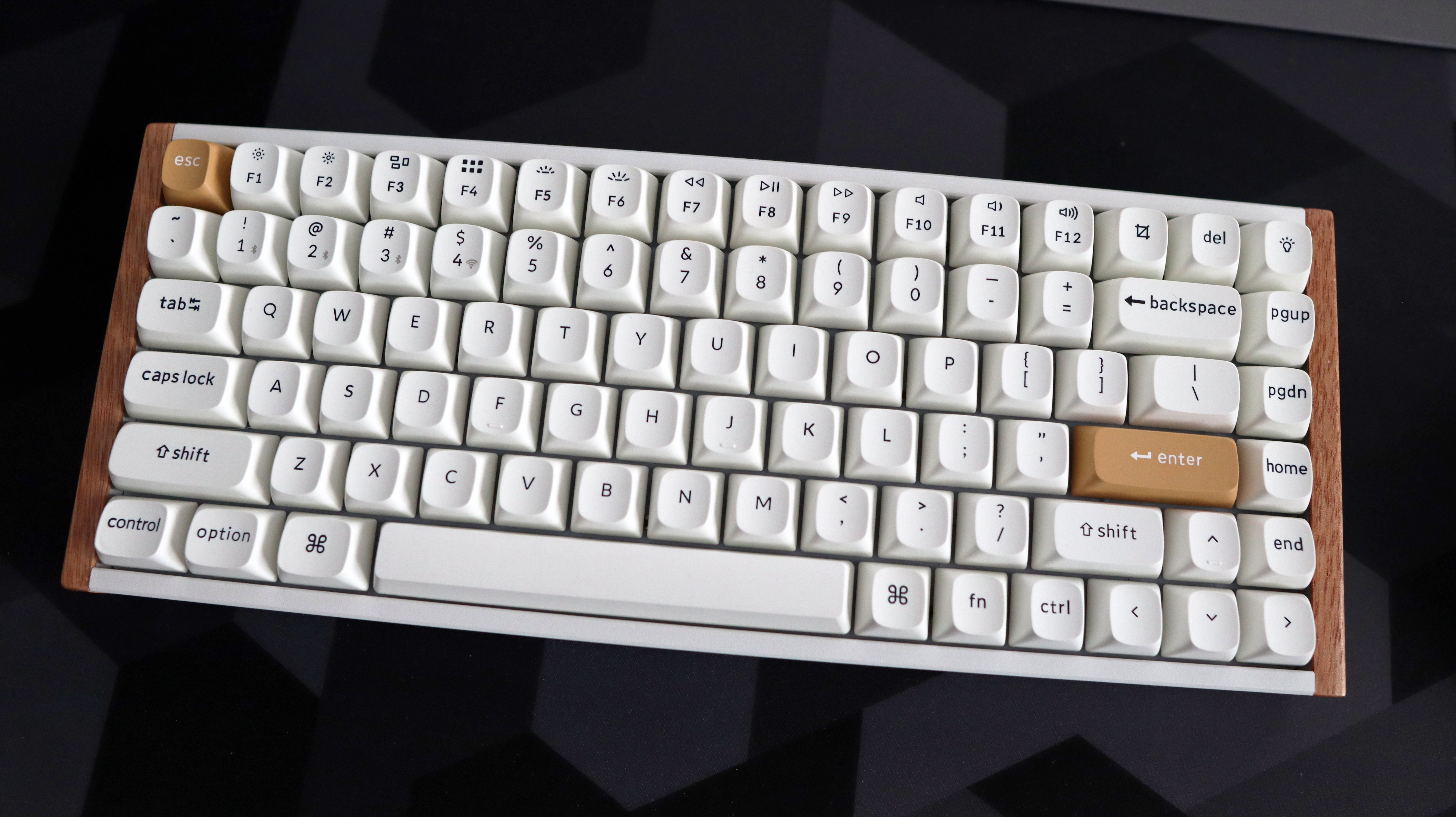

Specifications
Reasons to buy
Reasons to avoid
✅ You're a competitive gamer: Rapid trigger is a type of tech that is best suited for a serious gamer looking to cut mere milliseconds of their reaction time, and you pay extra for it.
❌ You want switch options: Although it's hot-swappable, there are few switches actually compatible with this keyboard.
If you're a serious, competitive gamer, then you'll want the absolute speediest of keyboards to ensure you don't lose, and the best rapid trigger mechanical keyboard for such gamers is the Keychron K2 HE.
The 'HE' part of the name refers to the Hall effect and in this instance, it means the key switches use the movement of magnetics across a sensor to detect actuation. It's so accurate that HE switches are the best choice for rapid trigger keyboards.
And it's all adjustable, too. Pick an actuation point of 0.4 mm, for example, and you won't waste valuable milliseconds on further key movement, as the key press will be registered at exactly that point.
Of course, there are lots of other HE keyboards on the market these days, such as the Logitech G Pro X TKL Rapid and the NZXT Function Elite MiniTKL, so why do we rate this one so highly?
One thing that the Keychron K2 HE has over the competition is price—it's very affordable and yet doesn't sacrifice anything in terms of build quality or battery life. Oh, and it's wireless, too, which is something you often don't get at this price point.
You don't have much in the way of switch choices, even though they're hot-swappable, but that's simply because there aren't many compatible replacements at the moment.
Hall effect switches and rapid trigger functionality are very much the future of PC gaming keyboards, and with the Keychron K2 HE setting such a high bar so early in tech's history, the future is looking very rosy indeed.
Read our full Keychron K2 HE review.
The best budget wireless mechanical gaming keyboard



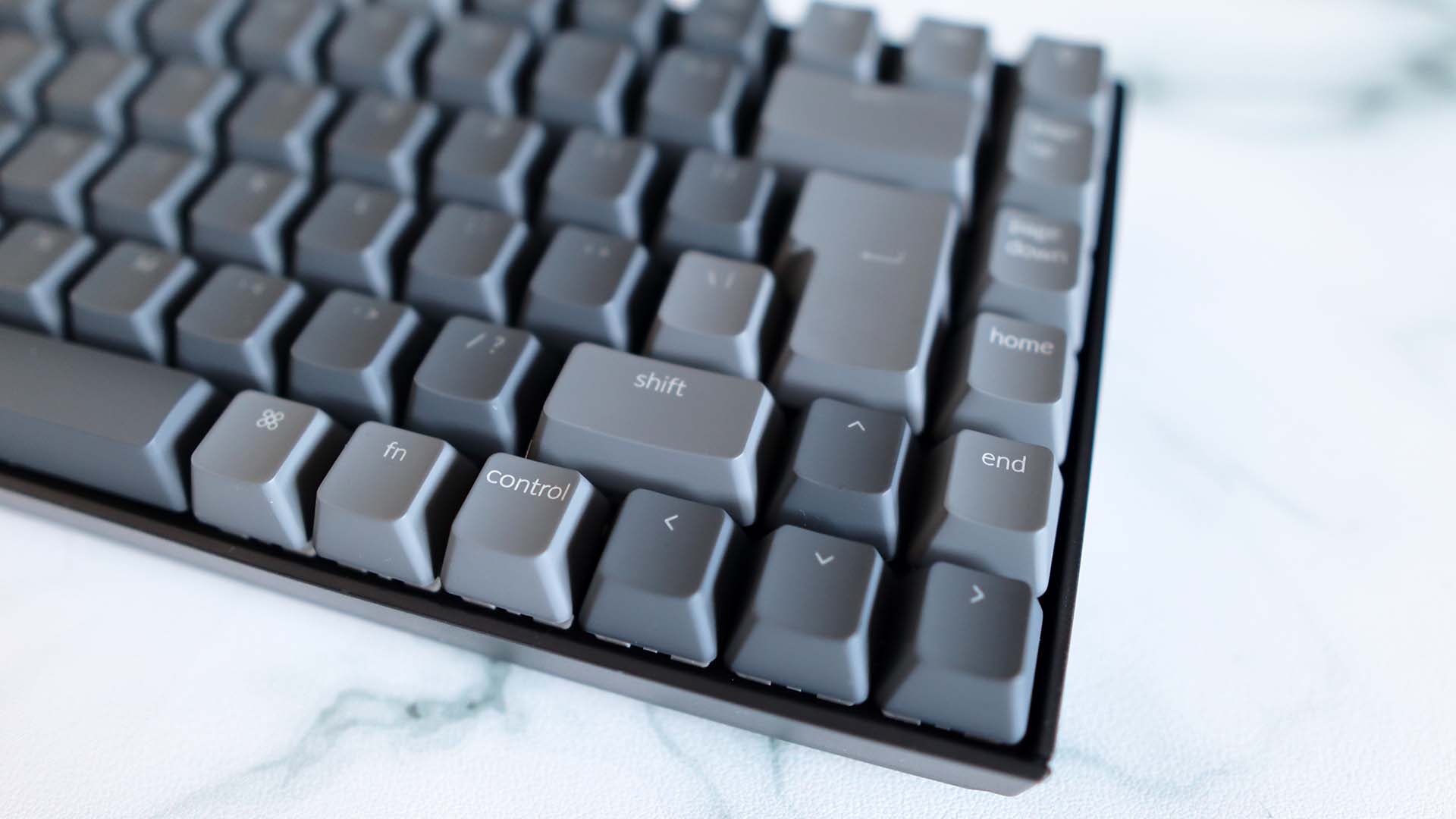


Specifications
Reasons to buy
Reasons to avoid
✅ You're looking to go cable-free on a budget: Mechanical wireless gaming keyboards can get pricey, but this one has everything you really need for less.
❌ You want funky colors: The white LED backlighting here is pretty good, but if you desire a rainbow effect or proper customisable RGB, this isn't the keeb for you.
Wireless keyboards are expensive. That used to be true. Now, though, you can find plenty of budget options, although for our money none beat this Keychron unit. Enter the Keychron K2 (version 2), the best budget wireless keyboard by far.
You'll pay around $69 for one of these, which, given all the other hardware you're likely to have spent your cash on, really isn't a lot. Don't be fooled into thinking you're getting something cheap and nasty for the money, though. The Keychron K2 is that rarest of things: cheap and good.
It's a sturdy little keeb, for a start. For this sort of money, you often end up with something that feels like it was made to a budget. But the K2 doesn't feel like a cheap object, thanks to a well-designed chassis and decent keycaps.
Wireless connection-wise, you get both Bluetooth and RF connections, along with a Type-C connection for wired antics and charging. Speaking of charging, you'll get 80 hours of usage with the backlight enabled, and 240 hours with it off. That's pretty good by most standards and saves some of the hassles you get with cheaper wireless boards and their often lesser battery lives.
That backlight, though, unfortunately, only lights up in white. That'll suit some, while others will want some more RGB options, but to be honest it's tempting to treat it as an unlit board and get the maximum battery life out of it.
Other downsides? Well, the switches aren't the greatest. They're not bad, necessarily, but they can feel a little scratchy, although perhaps that's us paying attention to switch feel more than most. Still, the K2 is also available in a hot-swappable configuration, so you could swap in your own.
Really though, for the money, there's little to complain about here. The connections are rock solid, and you get a keyboard that comes from a very respected name in the industry that's built to last for the sort of price you might find a no-name unit at a major retailer.
That makes the Keychron K2 (version 2) the best budget mechanical keyboard we've tested. Tons for your cash, not a lot of drawbacks.
Read our full Keychron K2 review.
The best low profile mechanical keyboard






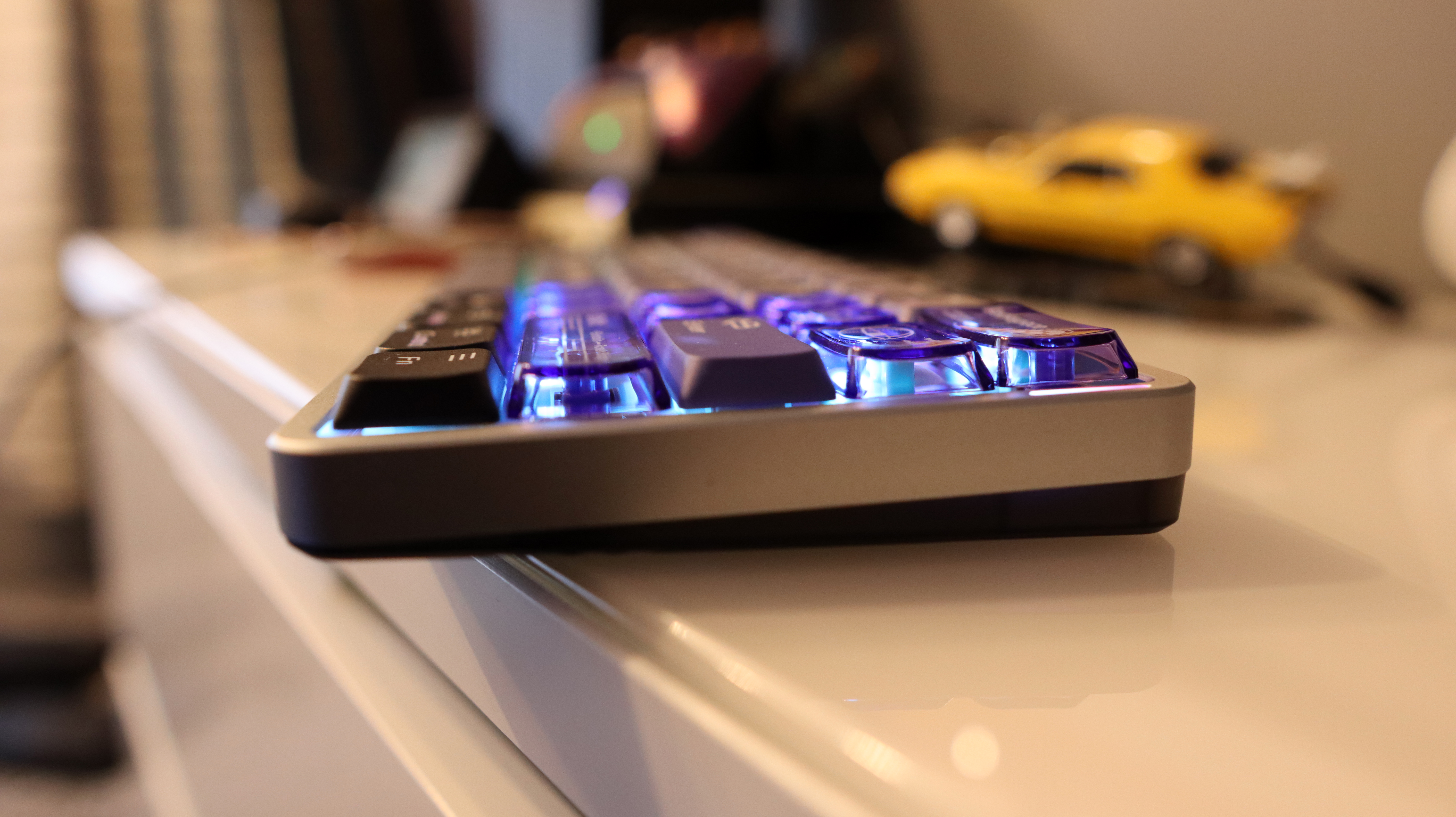
Specifications
Reasons to buy
Reasons to avoid
✅ You want the quickest keyboard around: The NuPhy isn't a one-trick pony. It's low-profile, affordable, and quicker than most thanks to down to a 0.1 mm actuation and 8,000 Hz polling.
✅ You prefer a low wrist position: There's no need to bend your wrists with a low-profile gaming keyboard such as this.
❌ You want a numpad or a function row: The smaller 60% footprint used here is great for gaming but does make office or school life a little tougher.
You might not have heard of the brand before, but the best low-profile mechanical keyboard is the NuPhy Air60 HE. It's one of the cheapest Hall effect keyboards I've seen so far and also sports rapid trigger functionality, adjustable actuation, an 8 kHz polling rate, and RGB backlighting.
That kind of feature set is normally the preserve of the ultra-expensive market, but the Air60 HE isn't great simply because it's cheap. It would still be our pick at twice the price.
Take the adjustable actuation, for example. You can set it all the way down to a mere 0.1 mm, such that the merest touch of a key will result in it being registered, making the keyboard ultra-responsive in games. That's better known as rapid trigger, and it's much sought after by competitive gamers these days.
The use of HE switches is also why it's so low profile, though the Air60 HE takes it one step further than the competition. At just 19 mm (0.74 inches) at its deepest point, you're barely going to raise your hands to use it—perfect for stress-free, long gaming sessions.
Better yet, the software you use to adjust all of the Air60 HE's settings isn't some clunky app. You just use your browser, meaning you can use any device to do it, even your phone.
You might think that low price means it feels cheaply made, but that's not the case. The switches are factory-lubricated and feel smooth in use, and the overall chassis is solid and robust.
The only thing you could complain about is the size. At 60%, you're giving up not only a number pad but also a row of dedicated function keys. That's not really an issue for gaming but it doesn't make it fiddly to use for office and productivity work.
If NuPhy can keep knocking bangers like the Air60 HE out of the door, it's going to be a keyboard name that everyone will know about.
Read our full NuPhy Air60 HE review.
Also tested
Cherry MX 8.2 TKL Wireless XAGA
As pretty as this keyboard is, and as nice as its MX2A Brown switches are, this shooting star misses the mark. Limited software offering no support for profiles is just one thing pulling it off course—though the expensive price doesn't help either.
PC Gamer score: 75%
Read our full Cherry MX 8.2 TKL Wireless XAGA review.
Cherry XTRFY K4V2 TKL
Though the red-accented retro styling of this keyboard is head-turning, little can distract from the ways it simply doesn't measure up. Oddly spaced, wobbly keys compromise an otherwise stylish typing and gaming experience.
PC Gamer score: 63%
Read our full Cherry XTRFY K4V2 TKL review.
Corsair K70 Pro TKL
Though this keyboard is a bit chunky and its lighting isn't great, the hall effect keys are solid, it has a high polling rate, great dual actuation, and excellent build quality.
PC Gamer score: 83%
Read our Corsair K70 Pro TKL review.
8BitDo Retro
An oddity but a good one, the C64 version of the 8BitDo Retro comes with a few 'Super' buttons, which can be programmed to do select commands. It has great battery life, excellent compatibility, and a fantastic aesthetic, even if it's a bit niche and a bit loud.
PC Gamer score: 83%
Read our full 8BitDo Retro Mechanical Keyboard review.
Lemokey L5 HE 8K
This keyboard is smooth, has a super sturdy build quality, and makes very satisfying noises. However, it's not wireless like some comparable choices, is rather heavy, and doesn't fully explain some of its customizability.
PC Gamer score: 87%
Read our full Lemokey L5 HE 8K review.
Ducky One X
The first induction keyboard is an admirable but mixed experience. The Ducky One X's switches are great, it comes with tons of spare keycaps, and is super stable. However, it's let down by mediocre software, okay battery life, no spare switches, and the fact that it's the first of its kind means there are few resources to get the most out of it.
PC Gamer score: 60%
Read our full Ducky One X review.
Gamakay TK101
Coming in at a great price point, Gamakay's offering has good connectivity and nice keycaps but it has a confused layout, its software is slow, and the build quality isn't great.
PC Gamer score: 64%
Read our full Gamakay TK101 review.
NZXT Function Elite MiniTKL
If the Keychron K2 HE didn't exist, this great keyboard would be our pick for the best rapid trigger. The NZXT is just as good but it's also more expensive, without bringing anything extra to the table.
PC Gamer score: 77%
Read our full NZXT Function Elite MiniTKL review.
Logitech G Pro X TKL Rapid
If you want a nice entry into the world of rapid trigger keyboards for competitive gaming, then Logitech's effort is worth considering. Just note that it's not wireless and the keys are very loud in use.
PC Gamer score: 86%
Read our full Logitech G Pro X TKL Rapid review.
Razer BlackWidow V4 Pro 75%
The lovely switches and premium features sadly aren't good enough to justify the enormous price tag. With all the RGB effects running, you'll barely get a day of use out of the battery, too.
PC Gamer score: 77%
Read our full Razer BlackWidow V4 Pro 75% review.
Wooting Two HE
The Wooting Two HE is immensely flexible (although not in terms of build, I hasten to add) and uses the power of magnets to create a mechanical keyboard with serious speed and excellent manners. The analogue controls take some time to get used to and it doesn't have the extras you'd expect at that price range like media controls or a wrist rest but it's otherwise super solid.
PC Gamer Score: 91%
Read our full Wooting Two HE review.
G. Skill KM250 RGB
This was our previous pick for the best budget mechanical keyboard, but the Mountain Everest 60's price drops have made it a better choice. Nevertheless, the MK250 RGB is a cracking little keyboard and is well worth its low cost.
PC Gamer score: 90%
Read our full G. Skill KM250 RGB review.
Alienware Pro Wireless
The RGB lighting here is pretty spectacular, and it blends old-school sci-fi charm with modern as you like features. Pricey though, and there's better competition for the cash.
PC Gamer score: 84%
Read our full Alienware Pro Wireless review.
Logitech Pro X 60
A very speedy esports-focused board, but unless you need ultimate performance, you can do better for less.
PC Gamer score: 77%
Read our full Logitech Pro X 60 review.
Razer BlackWidow V4 75%
There's nothing technically really wrong with the BlackWidow V4 75%, but the competition in this segment is fierce, and as a result, there are better choices available.
PC Gamer score: 75%
Read our full Razer BlackWidow V4 review.
Asus ROG Azoth
The Azoth is a fantastic high-end gaming keyboard in a miniature package. The Keychron Q3 Max bests it, however, although it's a tight run thing at points.
PC Gamer score: 90%
Read our full Asus ROG Azoth review.
Corsair K65 Plus
Non-gamer aesthetics do this board a lot of favors, and it's well-featured too. A serious contender, no doubt, but it does have the odd niggle, like a lack of macro keys and linear switches only for the base model.
PC Gamer score: 88%
Read our full Corsair K65 Plus review.
Das Keyboard 6 Professional
The Das Keyboard 6 Professional looks, well, professional, and makes for a bit of a stunning object on your desk. No software is a bit of a drawback, but otherwise, it's a delight.
PC Gamer score: 90%
Read our full Das Keyboard 6 Professional review.
Razer Huntsman V3 Pro TKL
This is a TKL board with a lot to recommend, although as usual it gets beaten by the Keychron Q3 Max. That's such a stunner of a keeb, it really has wreaked havoc against its competitors.
PC Gamer score: 85%
Read our full Razer Huntsman V3 Pro TKL review.
Cherry Xtrfy K5V2
There are better-feeling and cheaper, compact keyboards on the market, but the Cherry does have some much-improved switches, at least.
PC Gamer score: 71%
Read our full Cherry Xtrfy K5V2 review.
Drop Sense75
An awesome custom keyboard with an especially high price tag to match. The Sense75 is a marvellous board with great switches, gorgeous RGB and great construction, but only worth considering if you’ve got deep pockets.
PC Gamer score: 71%
Read our full Drop Sense75 review.
Logitech G915 X Lightspeed
This is a genuinely lovely low-profile keyboard that is held back significantly by its price point and Logitech's frankly awful software.
PC Gamer score: 70%
Read our full Logitech G915 X Lightspeed review.
Best mechanical keyboards FAQ
Which keyboard switch type should I choose?
It's entirely up to personal preference with keyboard switches. If you love a noisy keyboard, go for the clicky kind. If you like a spongier feel, go for linear switches. Or, if you prefer some feedback with your keypresses, go for a tactile switch.
It's possible to order keyboard switch tester packs from some suppliers, so if you want to try some out before you fork out, it might be a good idea to grab one of those.
Check out our mechanical keyboard switch guide for a more in-depth look.
Jargon buster
Actuation Point
The height to which a key needs to be pressed before it actuates and sends an input signal to a device.
Clicky
A switch that delivers an audible click every time it's pressed, generally right around the point of actuation.
Debounce
A technique to ensure that only one input registers every time a key is pressed.
Housing
The shell that surrounds the internal components of a switch.
Hysteresis
The result of the actuation point and reset point in a switch being misaligned. This generally means you need to release the key further than usual before it can be actuated again.
Linear
A switch that moves directly up and down, generally delivering smooth keystrokes without noise or tactile feedback.
Mechanical keyboard
A keyboard built around individual switches for each key rather than a membrane sheath mounted on a PCB.
Membrane keyboard
A keyboard on which all the keycaps are mounted on a membrane sheath; when a key is pressed, a rubber dome depresses and pushes against the sheath and PCB beneath, actuating the key.
Stem
The component of a switch on which the keycaps are mounted on a mechanical keyboard.
Switch
The physical component of a mechanical keyboard beneath the keycaps on a mechanical keyboard. The switch determines how a key is actuated, whether or not it provides audible or tactile feedback with each press and more. You can read a detailed explanation in our complete guide to mechanical keyboard switches.
Tactile
A switch that provides a 'bump' of feedback every time it's pushed.
Tenkeyless
A keyboard that lacks the right-hand number pad.
The biggest gaming news, reviews and hardware deals
Keep up to date with the most important stories and the best deals, as picked by the PC Gamer team.

Jacob earned his first byline writing for his own tech blog. From there, he graduated to professionally breaking things as hardware writer at PCGamesN, and would go on to run the team as hardware editor. He joined PC Gamer's top staff as senior hardware editor before becoming managing editor of the hardware team, and you'll now find him reporting on the latest developments in the technology and gaming industries and testing the newest PC components.
- Andy EdserHardware Writer
- Dave JamesEditor-in-Chief, Hardware
- James BentleyHardware writer

